Ski: 2022-2023 Line Blade Optic 104, 178 cm
Test Location: Mt. Crested Butte, Colorado
Days Skied: 15
Available Lengths: 171, 178, 185, 190 cm
Blister’s Measured Tip-to-Tail Length (straight-tape pull): 177.6 cm
Blister’s Measured Weight per Ski: 2074 & 2088 grams
Stated Dimensions: 132-104-123 mm
Blister’s Measured Dimensions: 131.8-103.5-123.2 mm
Stated Sidecut Radius (178 cm): 19 meters
Measured Tip & Tail Splay (ski decambered): 56.5 mm / 44.5 mm
Measured Traditional Camber Underfoot: 4 mm
Core Materials: aspen + partial titanal layer + fiberglass laminate
Base: sintered, “Fatty” (1.7 mm)
Factory Recommended Mount Point: -6.7 cm from center; 82.1 cm from tail
Ski: 2022-2023 Line Blade Optic 104, 185 cm
Blister’s Measured Tip-to-Tail Length (straight-tape pull): 184.4 cm
Blister’s Measured Weight per Ski: 2230 & 2290 grams
Stated Dimensions: 132-104-123 mm
Blister’s Measured Dimensions: 131.6-103.7-123.2 mm
Stated Sidecut Radius (185 cm): 20 meters
Measured Tip & Tail Splay (ski decambered): 59.5 mm / 44.5 mm
Measured Traditional Camber Underfoot: 3.5 mm
Factory Recommended Mount Point: -7 cm from center; 85.2 cm from tail
Boots / Bindings / Wax: Tecnica Mach1 MV 130, Atomic Hawx Ultra 130, Tecnica Cochise Pro W / Tyrolia Attack2 13 AT & Marker Griffon
mountainFLOW All-Temp

Intro
As we outlined in our First Look of the Blade Optic 96, this is a new series of freeride skis for the 2022-2023 season. In short, they combine the platform of Line’s lightweight Vision (hence the “Optic” name) skis with the metal-laminate construction of the Line Blade.
We’ve been skiing every ski in the new collection, and the first up for a full review is the one Line says is the most versatile, the Blade Optic 104.
Due to what Bob Ross would call a happy accident, we ended up getting a 178 cm Blade Optic 104 before eventually getting on the 185 cm model, which meant we could actually get even more reviewers on various lengths of this ski. So here, Kara Williard, Dylan Wood, and I will all be weighing in on both lengths of this playful metal-laminate ski.
What Line says about the Blade Optic 104
“The most versatile ski in the Blade Optic Collection, the Blade Optic 104 is right at home charging big mountain laps to cruising smooth turns on early morning corduroy and everything in between. Equipped with our Gas Pedal Metal Overdrive tech, you’ll harness the power of an innovative layup of titanal to feel enhanced edge grip, stability, and control under your feet. Get ready to kick it into top gear and ski with confidence on the Blade Optic 104.”
Construction
The Blade Optic 96, 104, and 114 all feature an aspen core, fiberglass laminate, and Line’s “Gas Pedal Metal Overdrive.” Essentially, that’s a layer of titanal that extends edge-to-edge underfoot, but tapers to a point as you move toward the tips and tails, and features cutouts throughout with the goal of getting some of the benefits of a full sheet of metal, but without hampering energy or “releasability” of the tips and tails.
These skis also come with Line’s extra-thick 1.7 mm “Fatty” sintered base, and their 2.5×2.2 mm “Fatty” edges, which should help when it comes to long-term durability.
Shape / Rocker Profile
The Blade Optic 104 looks a whole lot like the Line Vision 108; apart from the specific dimensions, the two are nearly identical when it comes to their taper and rocker lines. The Blade Optic 104 has what I’d call “moderately tapered” tips and tails for a ski of this width, and quite deep tip and tail rocker lines.
Flex Pattern
Here’s how we’d characterize the flex pattern of the 178 cm Blade Optic 104:
Tips: 5.5-6
Shovels: 6-6.5
In Front of Toe Piece: 7-9.5
Underfoot: 10
Behind the Heel Piece: 9.5-7.5
Tails: 7-6
And here’s how we’d characterize the flex pattern of the 185 cm Blade Optic 104:
Tips: 5.5-6
Shovels: 6-7
In Front of Toe Piece: 7.5-9.5
Underfoot: 10
Behind the Heel Piece: 9.5-8
Tails: 7.5-6
The 178 cm and 185 cm Blade Optic 104 have very similar flex patterns, with the most notable characteristics being their quite soft tips and tails, and a very stiff section around the bindings (the core is very thick around the binding area). Overall, though, these skis are definitely on the softer side of the spectrum, particularly compared to other similarly heavy, metal-laminate options.
Sidecut Radius
The Blade Optic 104 has a stated sidecut radius of 19 meters for the 178 cm length. That’s a bit on the tighter end of the spectrum, though not nearly as tight as the original Blade’s 13-meter radius.
It’s worth noting that, while the Blade Optic 92, 96, and 104 all share pretty similar sidecut radii, the Blade Optic 114 bumps things up significantly to 24 meters for the 186 cm model.
Mount Point
At about -7 cm from true center, the Blade Optic 104’s recommended mount point is fairly progressive / centered, but not as close to center as pure freestyle skis like the Line Sir Francis Bacon.
Weight
The Blade Optic series essentially replaces the Line Sick Day series, but they’re pretty different skis, and weight is one area where they differ a whole lot.
The Blade Optic 104 is a fairly heavy ski for its size; not the heaviest, but much heavier than the Sick Day 104. And frankly, when I saw these weights pop up on our scale, I got pretty excited; I tend to like softer, looser, more playful skis, but I also value good suspension / damping, and weight is a big factor in that.
For reference, here are a number of our measured weights (per ski in grams) for some notable skis. Keep in mind the length differences to try to keep things apples-to-apples.
1800 & 1804 Head Kore 105, 184 cm (21/22)
1806 & 1862 Armada Tracer 108, 180 cm (19/20–21/22)
1820 & 1821 Majesty Havoc Carbon, 186 cm (20/21–22/23)
1848 & 1903 Line Sick Day 104, 186 cm (16/17–21/22)
1875 & 1881 Line Sir Francis Bacon, 184 cm (19/20–22/23)
1905 & 1919 J Skis Slacker, 188 cm (20/21–21/22)
1920 & 2006 RMU North Shore YLE 110, 186 cm (21/22–22/23)
1947 & 2011 4FRNT Devastator, 186 cm (20/21–22/23)
1951 & 1953 Elan Ripstick 106, 188 cm (20/21–22/23)
1951 & 1957 RMU Apostle 3.0 106 Wood, 184 cm (21/22–22/23)
1964 & 1972 Moment Deathwish, 184 cm (19/20–20/21)
1970 & 1993 Moment Deathwish 104, 184 cm (21/22–22/23)
1993 & 2026 Black Crows Atris, 184.2 cm (19/20–21/22)
1999 & 2020 Rossignol BLACKOPS Sender Ti, 180 cm (20/21–22/23)
2005 & 2035 Liberty Origin 106, 187 cm (19/20–20/21)
2008 & 2065 Wagner Summit 106, 186 cm (20/21–22/23)
2010 & 2023 Moment Commander 98, 182 cm (20/21–22/23)
2011 & 2028 Moment Wildcat 108, 184 cm (19/20–20/21)
2011 & 2046 Elan Ripstick 106 Black Edition, 188 cm (21/22–22/23)
2022 & 2046 DPS Foundation Koala 103, 184 cm (21/22–22/23)
2046 & 2120 Black Crows Corvus, 188 cm (18/19–22/23)
2073 & 2074 Season Nexus, 183 cm (20/21–22/23)
2074 & 2088 Line Blade Optic 104, 178 cm (22/23)
2096 & 2100 Salomon QST 106, 181 cm (19/20–21/22)
2110 & 2119 Moment Wildcat 108, 190 cm (19/20–20/21)
2112 & 2125 4FRNT MSP 107, 187 cm (18/19–22/23)
2068 & 2178 Salomon QST 106, 181 cm (22/23)
2116 & 2181 Faction Dictator 3.0, 188 cm (19/20–21/22)
2120 & 2134 Blizzard Rustler 10, 188 cm (19/20–22/23)
2145 & 2167 Sego Big Horn 106, 187 cm (20/21–21/22)
2153 & 2184 Rossignol BLACKOPS Sender Ti, 187 cm (20/21–22/23)
2165 & 2211 K2 Mindbender 108Ti, 186 cm (19/20–21/22)
2165 & 2219 Icelantic Nomad 105, 191 cm (19/20–20/21)
2170 & 2180 Dynastar M-Free 108, 182 cm (20/21–22/23)
2177 & 2178 Moment Commander 108, 182 cm (20/21–22/23)
2232 & 2242 Blizzard Cochise 106, 185 cm (20/21–22/23)
2230 & 2290 Line Blade Optic 104, 185 cm (22/23)
2295 & 2344 J Skis Hotshot, 183 cm (20/21–21/22)
2302 & 2342 Dynastar M-Free 108, 192 cm (20/21–22/23)
2312 & 2386 Prior Husume, 188 cm (17/18–22/23)
2321 & 2335 Fischer Ranger 107 Ti, 189 cm (19/20–20/21)
2353 & 2360 Volkl Katana 108, 184 cm (20/21–22/23)
2449 & 2493 J Skis Hotshot, 189 cm (20/21–21/22)
Now, onto how all of this translates on snow:
FULL REVIEW
Groomers
Luke (5’8”, 155 lbs / 173 cm, 70 kg): For a 104mm-wide ski, especially for one with as deep of rocker lines as the Blade Optic 104, I think this ski is a whole lot of fun on piste.
The Blade Optic 104 doesn’t require a ton of speed or forward pressure on my boots to get it carving across the fall line, and its edge hold is impressive for its width. You can drive it pretty hard on piste to initiate high-edge-angle turns, but you can also carve it more casually, “rolling it over” from your ankles. However, it’s definitely a ski where most of its edge hold feels like it’s coming from the area around the bindings, rather than a less rockered, less tapered ski where you’re carving and engaging most of the length of the ski.
If I had to bet, I’d wager that this mostly comes down to construction. The area around the bindings of the Blade Optic 104 is both where the core profile is the thickest (by a big margin), and where the layer of metal extends edge-to-edge. These are both things that should, in theory, make that area much more torsionally rigid, and I’m super curious to test that theory with the help of the new Blister Labs program in the future. Anyway, the tips and tails of this ski feel fairly loose — on piste and off it — whereas the area around the bindings provides very impressive edge hold.
The upside is that you get good edge grip on firm, smooth groomers and a loose ride off piste and in soft snow. The downside is that the Blade Optic 104 doesn’t match the turn initiation or powerful end-of-turn finish of less rockered, less tapered skis.
That said, especially when groomers are fairly easily edgeable, the Blade Optic 104 will still produce a lot of energy coming out of a carve, so it still makes groomed snow a lot of fun. It just doesn’t do that in the same exact way that most precise, lively carvers do.
Kara Williard (5’9”, 167 lbs / 175 cm, 75.7 kg): I found the 178 cm Blade Optic 104 to be a lively and quick carving ski that is also relatively planted and stable. There are plenty of skis in the sub ~100 mm category that carve with more precision and stability than the Blade Optic 104, but for a ski that offers the level of maneuverability and energy that the Blade Optic 104 does, it performs surprisingly well on groomers that are anything from softer and grippier to firmer and icier. The Blade Optic 104 feels a lot more locked in and stable on edge than the Armada ARW 106 UL, and I found myself trusting the Blade Optic 104 at much higher edge angles and on much less grippy snow conditions than the ARW 106 UL.
Dylan Wood (5’10”, 155 lbs / 178 cm, 70 kg): I agree with both Luke and Kara here. The Blade Optic 104 is an impressive ski on groomers. It offers very good edge hold and energy coming out of turns, but isn’t very demanding and doesn’t require an ex-racer’s technique to utilize its carving potential. As Luke mentioned, this ski doesn’t match the turn initiation, precision, and power of a more directional, less rockered, and less tapered ski like the Volkl Mantra 102, but the Blade Optic 104 is more forgiving and easier to feather out of carved turns than that ski.
I’m not a gamblin’ man, but I would double-down on Luke’s wager that the Blade Optic 104 gets most of its edge hold and precision from its midsection, around the bindings, because of its construction. The Blade Optic 104 feels extremely torsionally stiff around this area. Again, this is not a ski that needs to initiate carved turns from the shovel, and I think a lot of people will appreciate that.
Soft Chop
Luke: Soft chop can be a lot of fun on the Blade Optic 104, particularly for playful skiers who also like to ski fast.
From a somewhat centered, balanced stance, the Blade Optic 104 offers very nice suspension and stability — far better than its predecessor, the Line Sick Day 104. The Blade Optic 104 doesn’t get knocked off track very easily, but it’s also happy to throw in slashes or airs without feeling cumbersome or really sluggish.
The 185 cm Blade Optic 104 offers significantly smoother suspension and better high-speed composure than the 178 cm length, but both skis offer a fun blend of stability and maneuverability. I rarely felt like the 185 cm Blade Optic 104 was holding me back from skiing as fast as I wanted in soft chop.
All that said, if you’re a directional skier who’s accustomed to skis with very rearward mount points (-8 cm or farther back) and/or stiff flex patterns, the Blade Optic 104 will likely require a bit of an adjustment period, or just not be the ski for you. It’s not a ski that encourages you to just lean into its shovels and expect it to blast straight through every pile of chopped-up snow. Rather, it lets you ski fairly centered to fairly forward and feels pretty composed when doing so, but I think aggressive directional skiers may find themselves wanting more support from the Blade Optic 104’s shovels. Especially in deep snow, it’s certainly possible to overpower them when driving them hard at speed.
However, the upside to the Blade Optic 104’s more centered mount point, deep rocker lines, and moderate flex pattern is that this ski feels much more playful overall, when compared to similarly heavy but stiffer, more rearward-mounted alternatives. So for those who like to ski fast in chop but also slash, surf, and air around the mountain, the Blade Optic 104 offers a lot to like.
Kara: Of all the conditions I skied the 178 cm Blade Optic 104 in, soft chop is where I found this ski to be most enjoyable. As Luke mentioned above, the Blade Optic 104 feels best when skied from a fairly centered stance. This took a little bit of getting used to, as I have been on several very traditionally mounted and directional skis this season, such as the Blizzard Black Pearl 97, Volkl Secret 96, and Salomon Stance 88 and 94. I am quite used to and typically feel best when powering a ski from a forward stance.
Fortunately, the Blade Optic 104 was surprisingly intuitive and didn’t take much getting used to. While it didn’t encourage me to really power it through the shovels like more directional skis, it felt smooth and predictable when finessing it with a slightly more centered stance. For a directional skier who is looking to ski with a more playful style and have a ski that feels really easy to pivot in soft chop while still feeling pretty damp, the Blade Optic 104 could be a great choice. I prefer skis in the 170-180 cm range, and the 178 cm Blade Optic 104 felt easy to maneuver but was stable and damp enough that I didn’t want any more ski (i.e., the 185 cm) in soft chop.
Dylan: Again, I am in agreement with what Luke and Kara said above. The Blade Optic 104 is a great ski for soft chop, particularly if you appreciate a ski that balances stability and maneuverability really well. The Blade Optic 104 can be skied really hard in soft chop, especially if you ski with a more centered stance. And while there are certainly more directional skis out there that are more stable, particularly when skied with a more forward stance (the Blizzard Cochise 106 comes to mind), the Blade Optic 104 is easier to slash and spin around than those skis, and is more forgiving of sloppier technique and backseat skiing.
Firm Chop / Crud
Luke: When conditions are both firm and rough, the Blade Optic 104 continues to offer a nice, smooth ride and good maneuverability, but it’s not a ski that excels at skiing super fast in these conditions. Rather, it makes it comfortable and predictable to make a lot of turns when the snow is really nasty.
As mentioned above, the Blade Optic 104 does a good job of muting out harsh vibrations from the snow, but it’s not a super stiff ski with a super long sidecut radius. So rather than try to push my limits in really harsh conditions, the Blade Optic 104 lets me ski through them in a controlled fashion without feeling like the vibrations from the snow were going to make the teeth rattle out of my head.
Firm crud is also where I noticed the difference in stability between the 178 cm and 185 cm Blade Optic 104 the most. The 185 cm version feels substantially more damp and planted, and also more capable of being skied hard, even when the conditions matched that description. On the 178 cm model, the suspension was still pretty good, but it wasn’t as planted and, combined with the shorter ski’s softer-feeling flex pattern, I felt more inclined to take things easy and make my way to some better snow.
Kara: Well, I skied what I would call the cruddiest day of the season on the Blade Optic 104. The Blister team made our way to the farthest skier’s right zone at Mt. Crested Butte, Third Bowl, for an afternoon. There, I found myself standing atop some pretty tight lines, making quick jump turns, and then we found ourselves in conditions that ranged from heavy powder atop some icy refrozen snow to some very unpredictable turns of refrozen crud. There were also a couple of nice pow turns in there, too.
The Blade Optic 104 offered a nice, stable platform when I needed it, yet also felt incredibly easy to pivot and turn when I needed it to be quick and loose. And then, when I was finally willing to open it up and get a couple of heavy, untracked powder turns with some obvious crust underneath, it felt smooth in its suspension while also floating and pivoting in a way that was playful and didn’t force me to be committed to big turns and high speeds. Additionally, when it came to the conservative, deliberate way in which I was making shorter, slower turns that day, I was happy to be on the 178 cm Blade Optic 104.
For someone who is seeking the absolute most damp and planted ski in firm crud, the Blade Optic 104 might not be for you. There are plenty of skis that are more stable and smooth in harsh crud, especially when charging fast (e.g., Black Pearl 97 or Secret 96). However, these more directional skis also forsake a level of playfulness and maneuverability that I benefited from on this variable and memorable day of the season, so it’s all about what you want to prioritize.
Dylan: Yep, similar to its performance in soft chop, the Blade Optic 104 offers nice suspension and stability in crud and variable snow without being very demanding. While I think the Blade Optic 104 offers above-average suspension, this isn’t some ultra-damp and stable monster truck. It does make variable and rough snow notably more enjoyable than if you were on a lighter ski (like the Sick Day 104 this ski replaces), though.
Moguls, Trees, & Tight Terrain
Luke: For its weight, the Blade Optic 104 is a pretty easy ski in tight terrain. Its tails are easy to release, it’s pretty forgiving of mistakes, and it caters to a variety of stances and skiing styles (its sweet spot feels quite large).
On the 178 cm Blade Optic 104, I could get pretty sloppy with my technique and not worry about the ski taking me for a ride. The 185 cm Blade Optic 104 is a similar story when compared to similarly long skis (especially those that are also similarly heavy), but it took more physical effort to do so than the 178 cm length. Still, for how smooth and stable it feels, it’s pretty easy to ski.
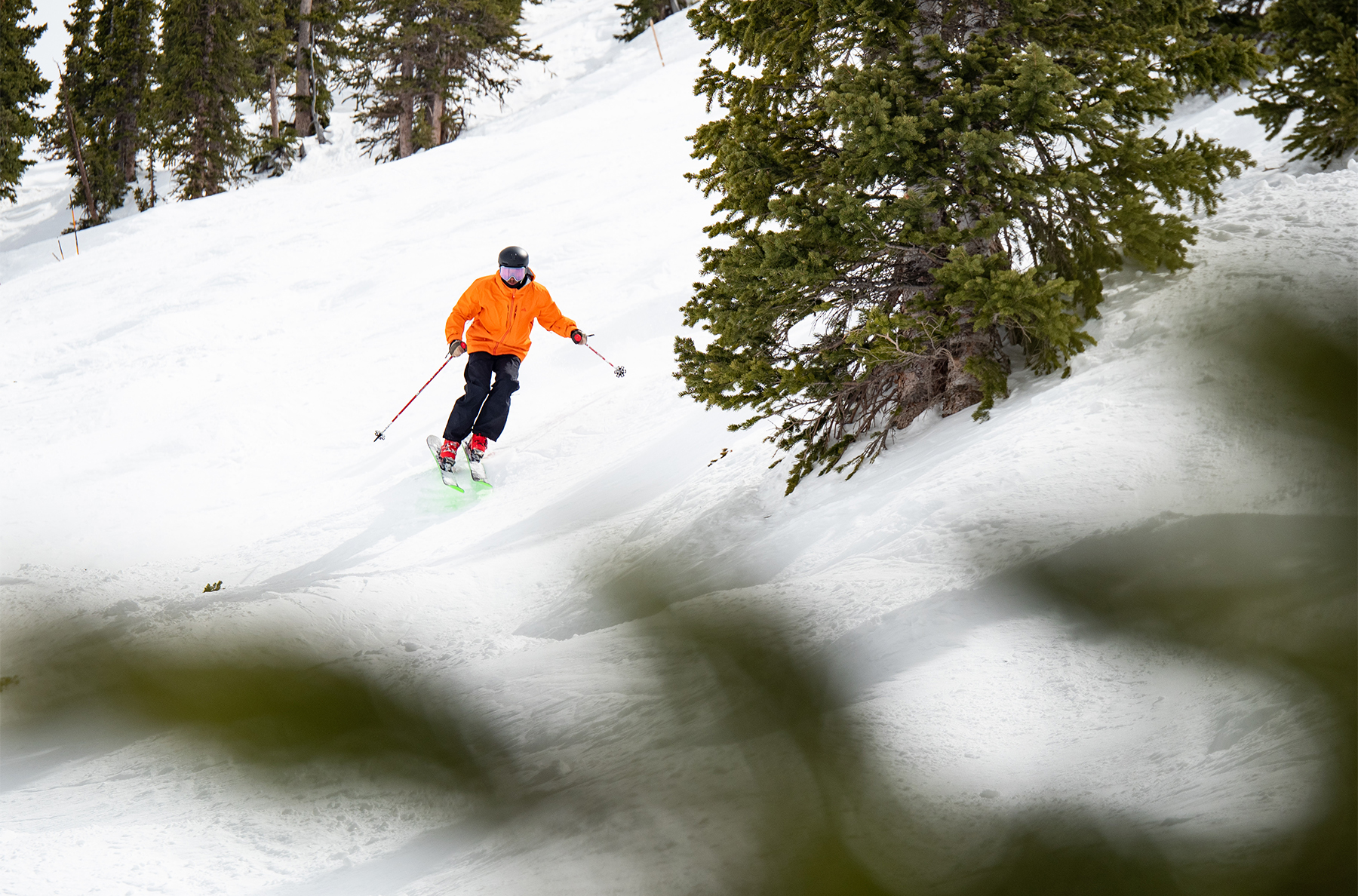
The Blade Optic 104 isn’t your best choice if you want something with a super low swing weight, nor is it the absolute loosest ski out there. But for how composed it feels at speed, it’s very accessible and intuitive when the terrain gets tight.
Also, same as on groomers, the Blade Optic 104 provides a really cool combination of damping and energy. While it does a good job of muting out harsh snow, it also produces a lot of pop when you bend it. This is a big reason why I personally like the Blade Optic skis for my skiing style, since they offer some of the suspension / planted ride of more directional, heavy chargers, but with some of the energy and life of lighter, more playful skis.
Kara: In tight terrain and moguls, the Blade Optic 104 is an intuitive, playful ski that feels stable enough to open it up and trust its suspension, but it also never punished me for getting a little off-balance. It was nice to transition to a slightly more centered stance for some of the fun spring moguls all over the mountain I found myself in, and the Blade Optic 104 never felt as though it needed to be powered or driven super hard to benefit from its smooth flex pattern and liveliness. While there were moments when I would have preferred a more damp ski with slightly better suspension (specifically when the moguls and steeps are refrozen and quite firm), the Blade Optic 104 was an easy ski to get along with and provided enough stability to justify taking it out on some of the firmer days and into some of the more challenging terrain on the mountain.
Dylan: I want to emphasize a point Luke made here. The Blade Optic 104 offers good suspension and stability in more open terrain and at higher speeds, but what might be most impressive is how playful, energetic, and lively it also feels in tighter terrain. The Blade Optic 104 is both more playful and more forgiving than many similarly damp and stable skis, and it strikes me as a solid option for skiers who spend their time both skiing fast in open terrain as well as skiing slower and making more turns in tighter terrain.
Powder
Luke: I only skied the Blade Optic 104 in a bit of fresh snow (probably 8 inches and shallower), and it performed as well or better than I’d expect from a 104mm-wide ski.
Same as in deep chop, the Blade Optic 104 encourages a fairly centered, upright stance in soft, fresh snow. Its fairly wide, deeply rockered tips do a very good job of planing up in fresh snow, but it’s still not a ski that encourages a really aggressive, forward, driving stance when conditions are deep. All in all, though, it performs very well in fresh snow for its width, and I’d be pretty happy taking it out on most days when it’s snowed about a foot or less. More than that, and I’d be looking for the Blade Optic 114.

Kara: As mentioned above, the powder days I experienced on the Blade Optic 104 featured some variability. However, when I did find myself in the turns that felt almost bottomless, the Blade Optic 104 provided plenty of flotation, which made it easy to turn while staying atop the snow. This maneuverability is best accessed through a centered stance; when I did find myself trying to drive the shovels, they felt less willing to stay atop the snow.
The much more common experience for me was semi-soft turns that had a very obvious firm base underneath, and here too, the Blade Optic felt willing to surf through the soft snow, but also provided a damp and smooth ride when it was obvious there was still some firm snow underneath. Based on my experience in these soft conditions, the Blade Optic 104 seems like a great choice for someone looking for a ski that is playful in powder and other soft snow, but versatile in a whole lot of other conditions, too.
Dylan: I was fortunate enough to catch a really memorable rope drop in Third Bowl at Mt. CB aboard the Blade Optic 104. Its performance in pure powder was similar to its performance in chop; it could be skied hard and fast, but preferred to be skied from a more centered stance. As Kara mentioned, when skiing it from a centered stance in powder, the Blade Optic 104 feels pretty loose and maneuverable, notably so for a 104mm-wide ski.
It felt a bit bogged down at slower speeds in the 20+ inches of fresh snow I was skiing (I happened to catch this rope drop at around 2:30 on the last day of the Blister Summit when Third Bowl hadn’t been open for almost a week after a major storm), but as long as I kept things moving, I stayed atop the deep snow and was able to slash and pivot the ski around as I needed.
Playfulness
Luke: Aside from its swing weight and not-quite-true-twin tip, the Blade Optic 104 is a very playful ski. It lets you ski it centered, it feels pretty nice in the air, it’s energetic, and it’s easy to release and throw sideways. There are plenty of skis that are easier to spin, land switch better in really deep snow, or are even looser / surfier. But for someone like me, who isn’t throwing big spins or landing switch in deep snow, the Blade Optic 104 is plenty playful for my preferences.
Kara: I tend to ski a lot of skis with traditional mount points and shallower rocker lines than the Blade Optic 104. Of all the skis I have spent time on this season, the Blade Optic 104 is one of the more playful ones, and yet it doesn’t feel like a huge leap from the more directional skis I am usually on. For this reason, if a directional skier is looking for a ski that will be a little more friendly, fun, forgiving, and can be skied with a more centered stance, the Blade Optic 104 would be one of my top recommendations. This is a ski that is very playful in many regards while not being too hard to figure out for someone who spends a lot of time on more directional skis.
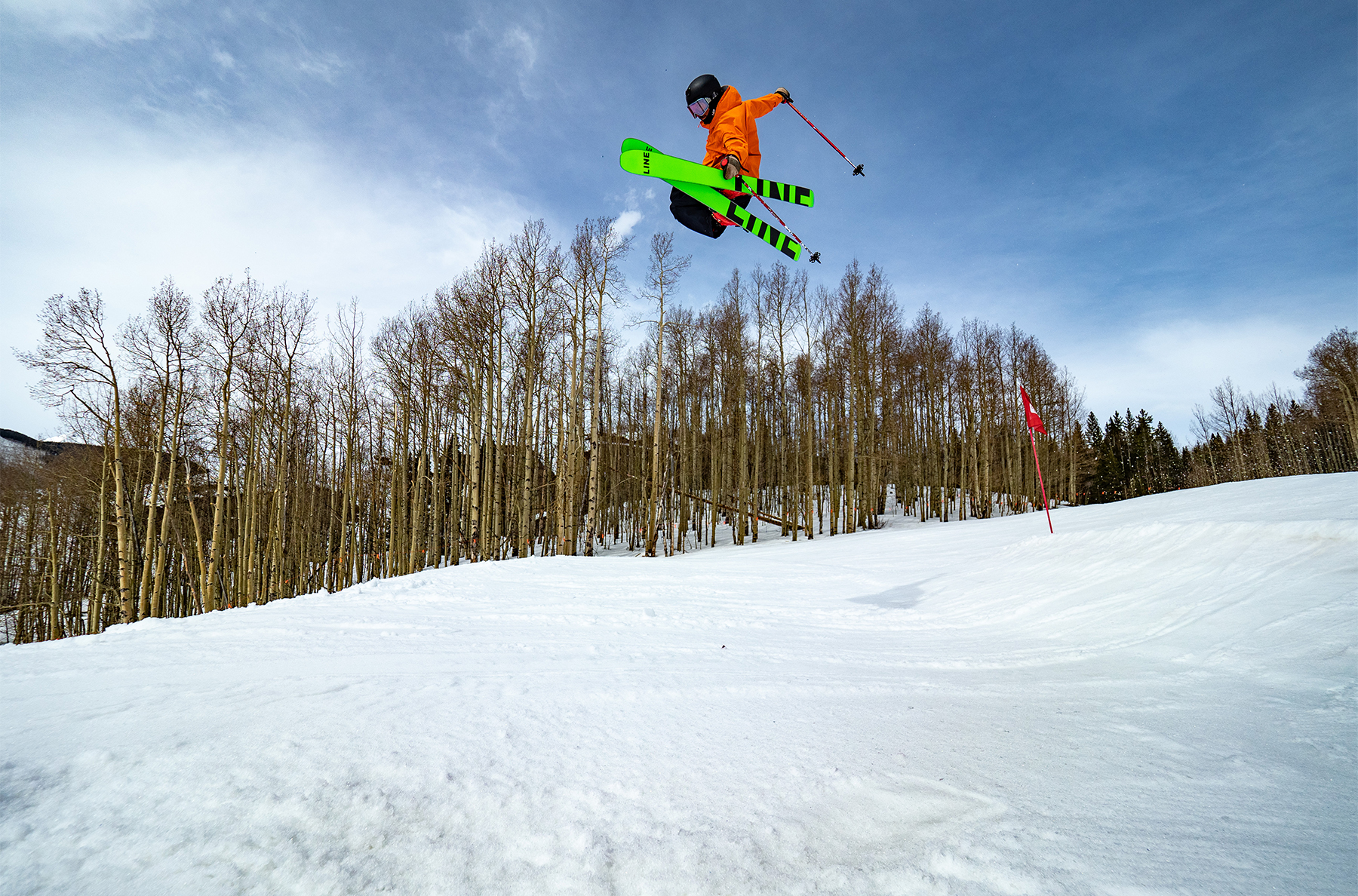
Dylan: I would definitely call the Blade Optic 104 a playful ski for the reasons Luke and Kara mentioned above. This ski is relatively easy to spin, pretty loose, and skis switch quite well. Its somewhat soft tips and tails also make butters more accessible than on similarly stable skis. Again, what is most impressive here is not purely the Blade Optic 104’s playfulness, it is how playful this ski is in relation to how stable and damp it is, too.
Mount Point
Luke: At around -7 cm from true center, the Blade Optic 104’s recommended mount point felt great to me and I never felt the need to move away from it. For reference, most of my favorite skis tend to have similar mount points. I’m guessing you could move a couple centimeters forward or back from that recommended line and still be ok, but I don’t think doing so is going to make it feel like some pure freestyle ski, nor a very directional one. If you’re worried the Blade Optic 104 is too soft for you and think moving the mount point way back will fix that, I think you should instead look to some more directional skis.
Kara: I have spent a lot more time on skis with mount points around -11 cm this season, but the Blade Optic 104 still felt pretty easy to get used to. It felt intuitive and well-balanced from its recommended mount point, which never left me thinking I should experiment with anything different. That said, I was adapting my skiing style ever-so-slightly to this ski, so for a directional skier who is unwilling to do that, it might be reasonable to move the mount point farther back, or like Luke said, just go for a more directional ski.
Dylan: I’m with Luke here. My favorite skis I’ve spent time on all have mount points that are similar to the Blade Optic 104’s and I never felt the need to stray from the recommended line.
Length
Luke: I really enjoyed my time on both the 178 cm and 185 cm Blade Optic 104. As someone who tends to prefer skis in this class in the length range of 182–192 cm, I’d personally go with the 185 cm length if I was buying this ski. I really liked the 178 cm length when I was taking it easy, spending a lot of time on groomers, or just looking for a very maneuverable ski. But the 185 cm length provided the stability and high-speed composure I personally want from this sort of ski, especially in chop and crud.
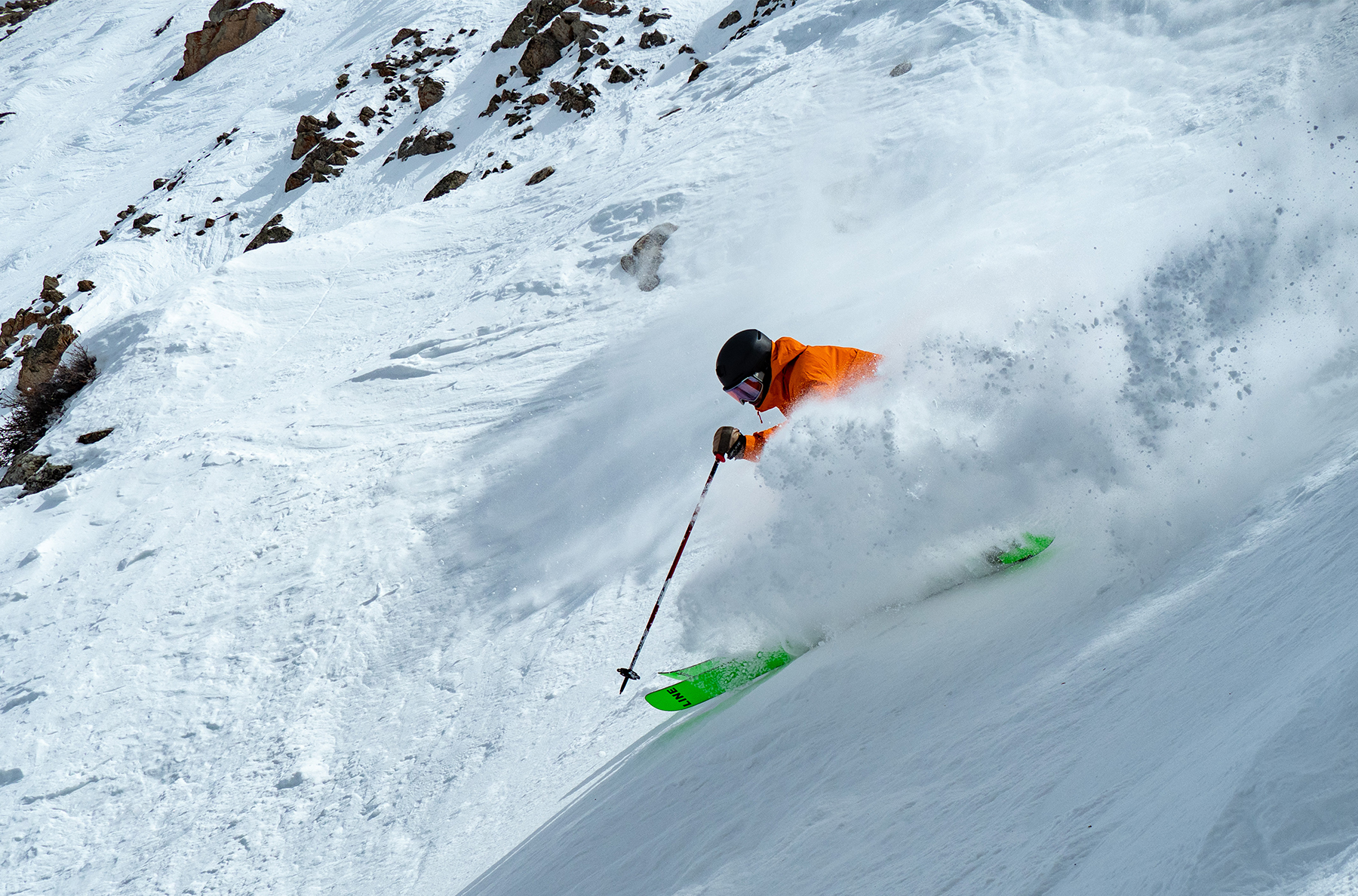
Kara: I am totally happy with the 178 cm Blade Optic 104, as someone who tends to get along well with more traditional skis with shallower rocker lines in the low 170’s, or closer to 180 cm for more rockered, more playful skis such as the Blade Optic 104 and Armada ARW 106 UL. There wasn’t anything that made me feel like I even wanted to try the 185 cm Blade Optic 104, since the 178 cm version offered plenty of stability and flotation for me, while still feeling highly maneuverable and easy to flick around. And to be honest, if I am purely looking for a really damp and planted ride on a really firm day, then I would likely find myself skiing a shorter, heavier, narrower, more directional ski like the Volkl Secret 96 or Blizzard Black Pearl 97.
Dylan: I spent the entirety of my time on the 185 cm Blade Optic 104, as I felt the 178 cm length would feel too short for me. And why bother getting time on the 178 when we already had two knowledgeable (and good-looking) reviewers on that length anyway? Efficiency, people.
Who’s It For?
Luke: It’s hard to really narrow down the ideal audience for the Blade Optic 104 since it blends traits from so many different categories of skis.
First, it could be a great choice for directional skiers who prioritize good suspension on rough snow, but who also want something that’s very maneuverable and forgiving.
Second, it could work really well for more freestyle-oriented skiers who find most all-mountain freestyle skis too twitchy, harsh, and/or unstable when skiing fast in rough snow.
Third, it could work for beginner or intermediate skiers who are looking for a ski that they can grow with, no matter if they’re working on their carving, off-piste skiing, or freestyle skills.
I would not recommend the Blade Optic 104 to aggressive directional skiers who want a really stable, supportive ski that they can drive hard through any sort of crud or chop, nor those who want an ultra-quick ski with a very low swing weight. But outside of those groups, there are reasons to consider the Blade Optic 104. And given its versatility across most conditions, it’d make a strong case for a 1-ski quiver in areas that rarely see super hard ice or super deep pow days (it’s one of the top contenders for my personal 1-ski quiver pick next year…).
Kara: Yes to all that Luke said. For someone looking to improve their skiing in more challenging off-piste terrain, the Blade Optic 104 is a good option since it doesn’t require a ton of input to get a quick response, but is more damp and stable than lighter alternatives. It can also serve as a reliable, stable ski for an experienced skier who just wants something more playful. As far as its versatility, the Blade Optic 104 is a viable choice for a 1-ski quiver, and I have a feeling that you could see that not only from Luke, but also myself in next years’ selections.
Dylan: Preach!
Bottom Line
The Line Blade Optic 104 blurs the lines between freestyle, directional freeride, and all-mountain skis. It’s a ski that offers a very nice, smooth ride on harsh snow, yet it’s also easy to slip and slide around tight terrain and isn’t super quick to punish mistakes. It also caters well to a more playful, balanced skiing style, yet directional skiers who prefer a softer ski (but still with good suspension) could also really like it. So while it’s tough to pin down who exactly should be putting it at the top of their list, it’s easy to say that there are a whole bunch of people that could enjoy it.
Deep Dive Comparisons
Become a Blister Member or Deep Dive subscriber to check out our Deep Dive comparisons of the Blade Optic 104 to see how it compares to the Line Blade Optic 96, Line Blade Optic 114, Line Sick Day 104, Line Sir Francis Bacon, J Skis Hotshot, Nordica Enforcer 104 Free, Salomon QST 106, Wagner Summit 107, K2 Mindbender 108Ti, Shaggy’s Ahmeek 105, DPS Koala 103, Dynastar M-Free 108, Blizzard Rustler 10, Sego Big Horn 106, Moment Deathwish 104, Black Crows Atris, Volkl Katana 108, Moment Commander 108, Blizzard Cochise 106, 4FRNT MSP 107, & Fischer Ranger 102 FR.

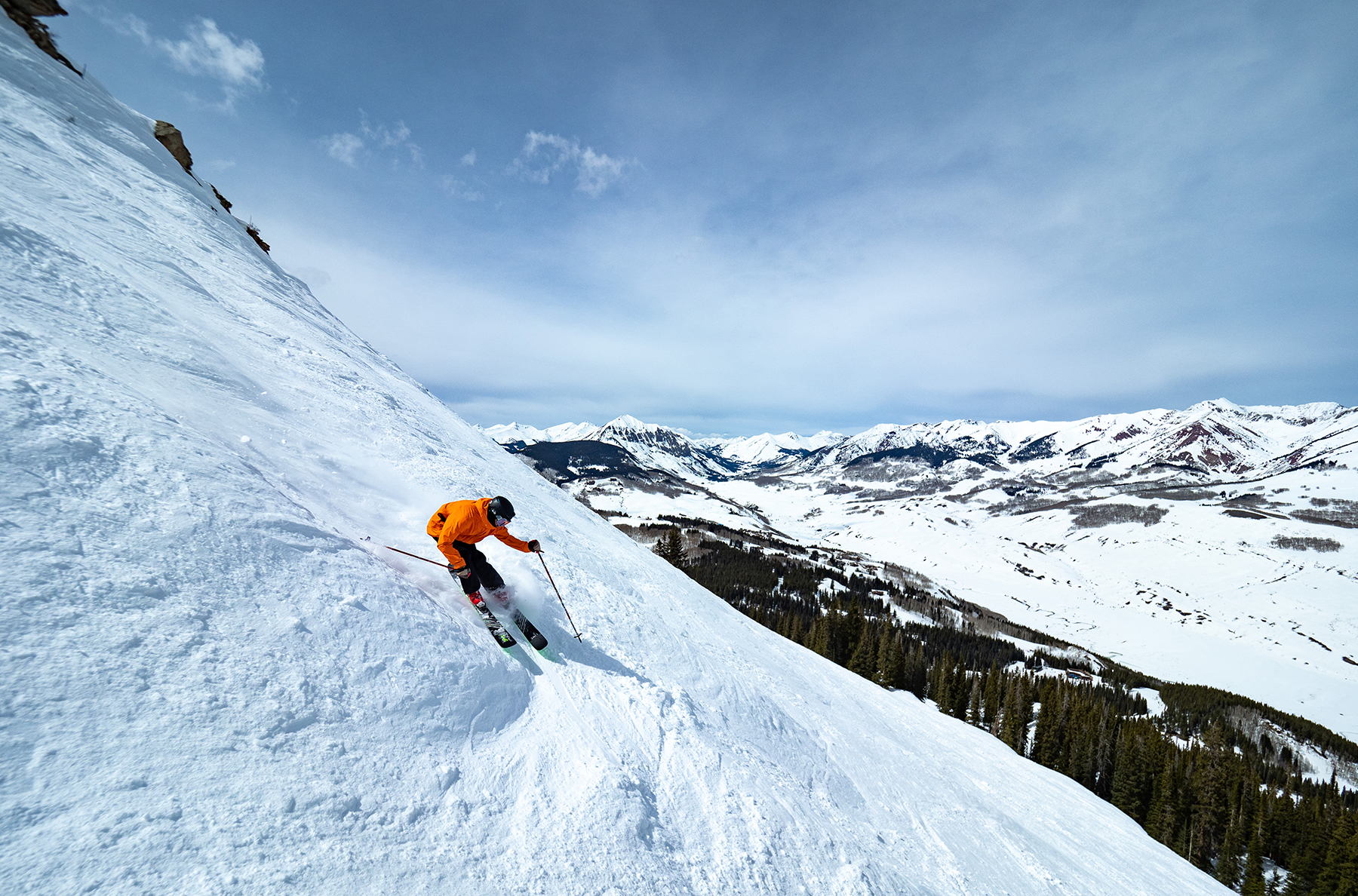
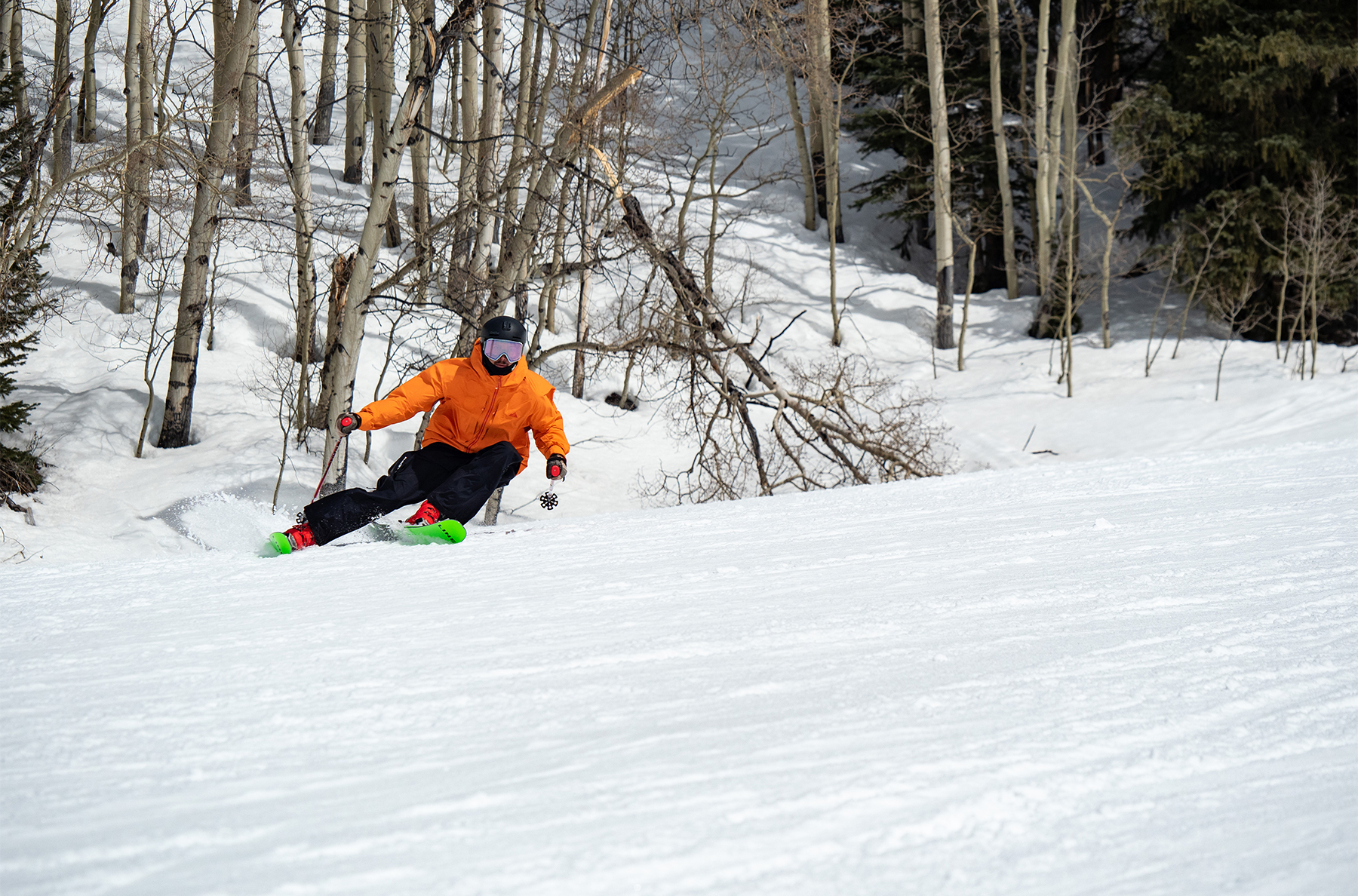
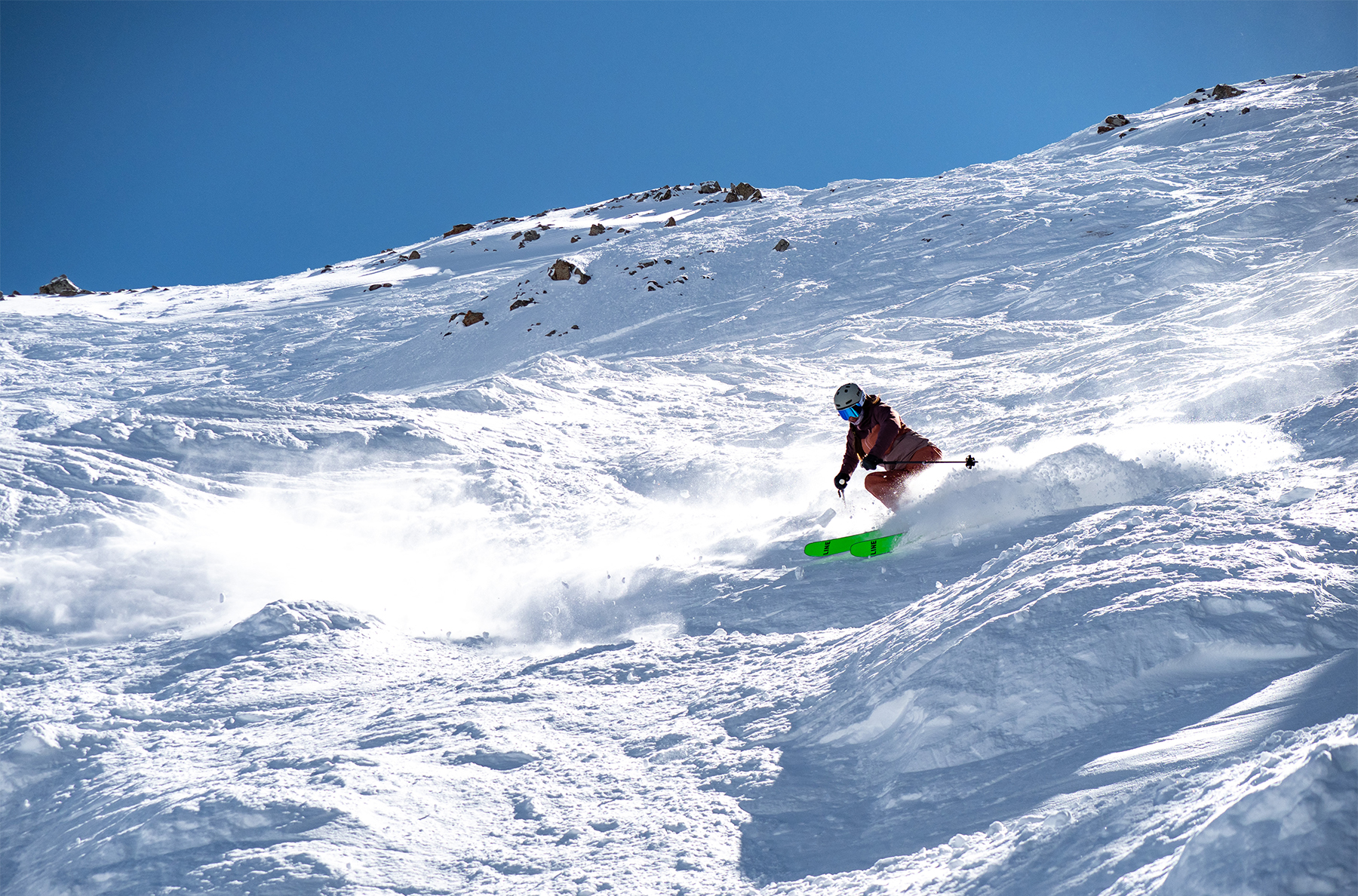

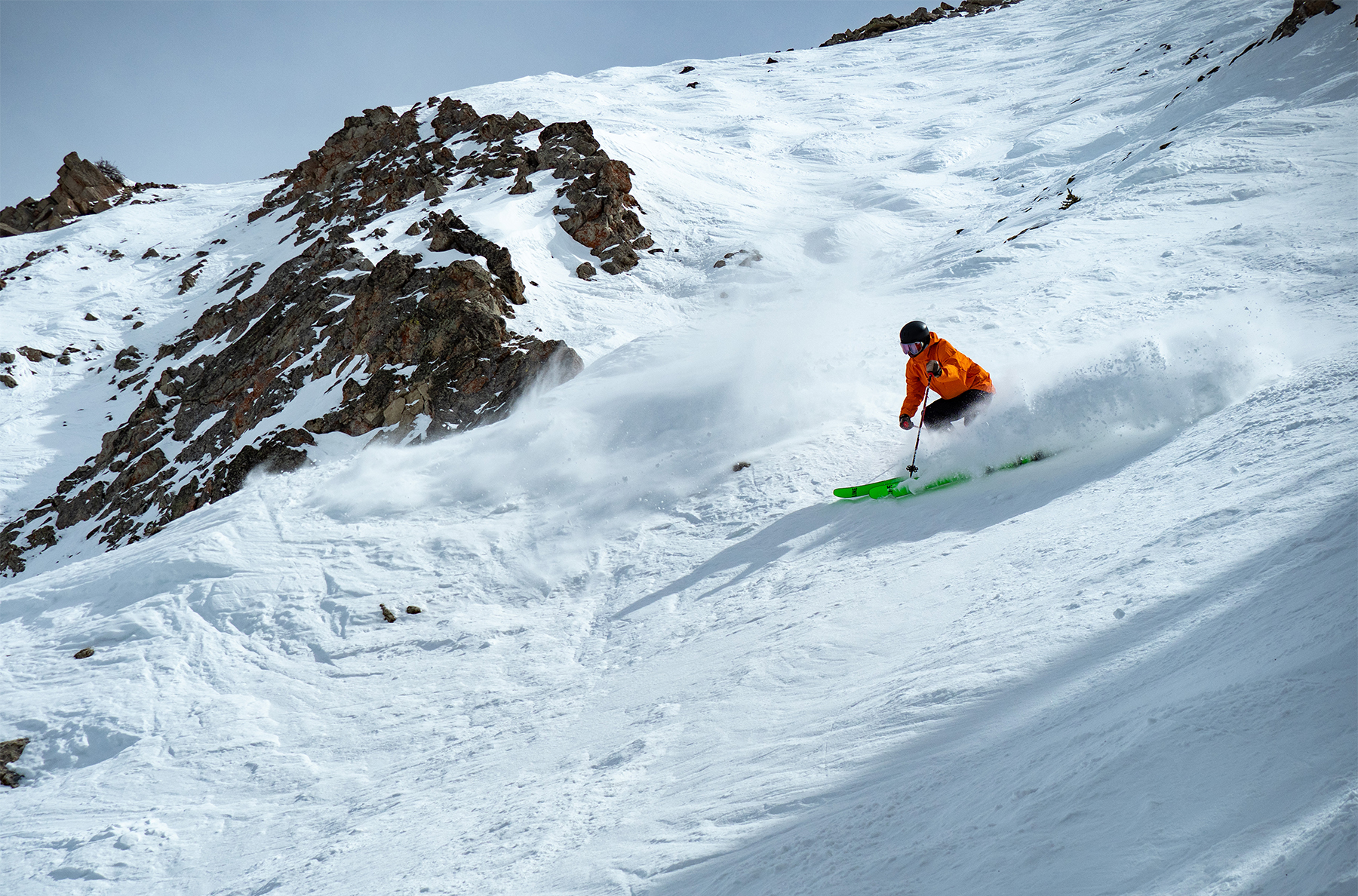
Love it, thanks for the details! Sounds like this ski is exactly what I was hoping for: a 1-ski quiver (or at least, a I-only-bring-1ski-on-the-plane vacation quiver).
Now to decide whether to go 185 or 190
Thanks for the review. I was able to ‘test’ these in Engelberg at the weekend in a 178 (they didn’t have the 184 unfortunately). Was a little hard to judge them really as it was the kind of day Jonathan ‘loves’, essentially skiing one piste marker to the next to find our way. I felt confident on them but had enjoyed being on the Atris the day before as it was so easy to pivot them around in comparison. Could feel the weight and stiffness of these and cannot claim to have got into the shovels very much given the conditions. Would be interested to try them again in different conditions
Thanks for the thorough review, as always. I’m really interested to know your thoughts on how this compares to an older Line ski – the Supernatural 108. I’m still on that ski and looking for a suitable replacement. Seems like the Blade Optic is a progression of that ski, but less directional and less capable of plowing through chop.
I am trying to answer the same question for the exact same reason. RIP Supernatuals
Why does Line list the weight at 1890 and Blister at 2230-2290. Is that marketing on Lines behalf on the less weight being more attractive for un informed buyer ? Line should be proud to post their actual weights . That is a huge spread and if I only read throw away reviews would have not considered the ski.
They sure make sense spec wise and will grab some.
Thanks for being the best reviewers out there.
Exactly my thought… I would like to use them occasionally for ski touring with my cast bindings but there is a huge difference on the weight stated by both Line and Blister…
Love this review. I’ve got a pair of 185s in the mail! However, I am getting a lot of mixed reviews on binding size. I have a pair of Marker Griffon id 13s that are 110 mm. I used them on a different pair of 104s which worked well but the brakes felt too wide and sometimes snagged my pants while skiing. The line manufacturer says they recommend a 100mm binding which can be stretched to fit the 104. However, the guy who mounts skis in my area (has been doing so for 30 years reportedly) says the 100mm binding is a risky choice. Would love to hear some input from y’all on what would work best.
I’d go with your ski tech on this and use 110s. My visions measure a strict 108mm at center, but about 111mm where the brakes cross the edges. I would guess that the blade optic has a similar difference. Maybe someone with the actual skis can get an exact measurement?
Any thoughts on the 190cm version of this ski?
The two skis that I’ve been spending the most time on recently are the Sick Day 104 (186) and the Whitedot Altum 104 (187) – the Sick Days for backcountry and the Altums for resort. I’ve been happy with both, though the tails on the Altum are occasionally a bit firmer than I’d like. My hope is that the Blade Optic sort of feels like a heavier Altum with a softer shovel and tail – is that a fair expectation? Thanks!
Emailed you, Russell!
6’2 185lbs advanced skier, 185 or 190cm? For reference I have skis @ 185(RMU Apostle 106) selling those and Line Supernatural 115 @192.
Did you get the 190? I’m also looking for this beta. Trying to extrapolate what has been said between the 178 and 185 but you never know. I’m 6’3″ and 205#, typically preferring long skis, but intend to use the Optic104 as my terrible-condition ski, namely cruddy bumps…
Thanks for the great review! I find the line blade optic 104 in a 178cm length similar to the older Atomic Alibi with the first Ti rib from around 2008 time frame. I liked the heavier super responsive and maneuverable Alibi (180cm, 98) so much I bought 3 pairs. These skis, like the line blade optics (178cm, 104), are indestructible in the rocks, bumps and stumps with the typical highly variable snow conditions off the Pali chair at A-Basin,CO. Mount the Line Blade Optic with pivot bindings and get the full flex and pop from the ski. You can literally launch and dive into the next turn with confidence. I am on my last pair of Alibis and was so excited to pick up a pair of Line Blade Optics 104s as a replacement.
For wider skis, like this, I often debate between longer, for float in powder, and shorter, for maneuverability. At 6’3” / 175#, that would be 185 or 190, for this ski.
Like Russell and Andrew, above, would love to hear thoughts on this.
Any thoughts as a tele setup on 22 design axl bindings for the 178s